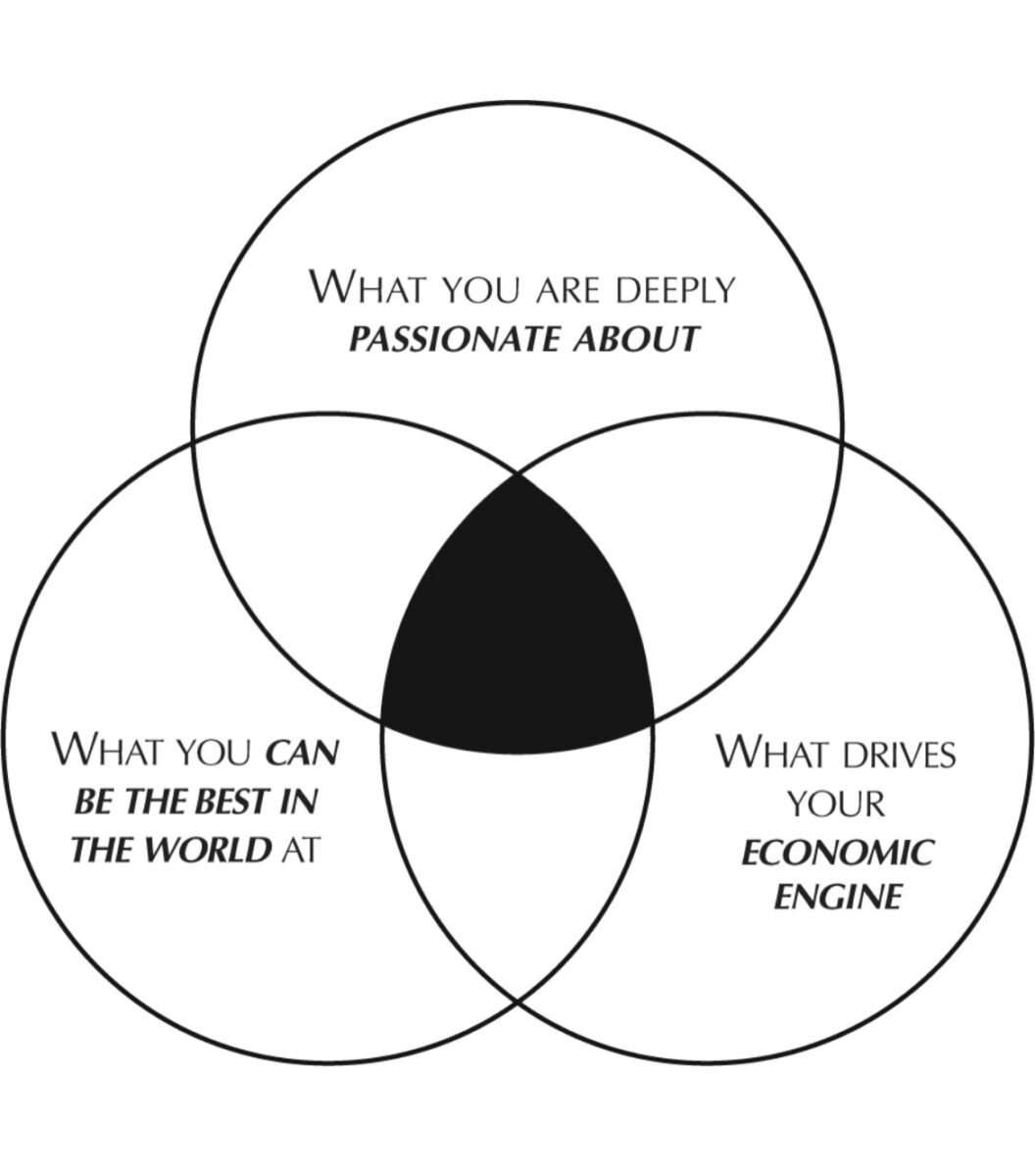The Hedgehog Concept is one of the most renowned ideas from the influential book Good to Great by business management guru Jim Collins. This powerful model provides a framework for organizations to define their core mission and purpose so they have a focal point to enable a transformation from good to great.
In today’s complex business landscape filled with distractions, the elegantly simple yet profound Hedgehog Concept teaches companies to focus on one big idea for achieving excellence. By understanding the genesis and practical application of the Hedgehog Concept, organizations can shift their trajectory to become truly great. This article will explore the Hedgehog Concept, its key components, real-world examples, and steps to discern your organization’s Hedgehog Concept as the strategic core for breakthrough success.
Introduction to the book “Good to Great.”
Published in 2001, Good to Great by Jim Collins explores how good companies can become great companies. The book analyzes companies that leaped from good to excellent performance, sustaining it for at least 15 years. Collins and his research team identified key concepts and frameworks to explain how good companies can become truly great.
Here are the core concepts from the book:
- Level 5 Leadership: These leaders blend personal humility with professional will. They are ambitious for the company, not for themselves.
- First Who, Then What: Before determining the direction to take a company, get the right people on the bus (and the wrong people off the bus). Once you have the right team, deciding where to drive the company becomes more manageable.
- Confront the Brutal Facts (Yet Never Lose Faith): While it’s essential to have unwavering faith that you can and will prevail, it’s equally crucial to confront the most brutal facts of your current reality.
- The Hedgehog Concept: This concept is derived from the ancient Greek parable of the fox and the hedgehog. While the fox knows many things, the hedgehog knows one big thing. Companies should focus on where these three circles intersect:
- What you are deeply passionate about.
- What you can be the best in the world at.
- What drives your economic engine?
- A Culture of Discipline: Disciplined people who engage in disciplined thought and take disciplined action are the hallmarks of a culture that can create greatness.
- Technology Accelerators: Good-to-great companies think differently about technology. They avoid jumping on new technology bandwagons and become pioneers in applying carefully selected technologies.
- The Flywheel and the Doom Loop: Sustainable transformations follow a predictable pattern of buildup and breakthrough, much like relentlessly pushing a giant, heavy flywheel. Conversely, companies that jump from one new program or fad to another find themselves trapped in the “doom loop,” experiencing chronic inconsistency and lack of sustained results.
- Preserve the Core/Stimulate Progress: The idea here is that great companies have a set of core values that remain constant over time, but they are also willing to change and adapt everything else to stimulate progress.
Who is Jim Collins?
Jim Collins is an American business consultant, lecturer, and author on business sustainability and organizational management. He has authored or co-authored six books, including Built to Last, Good to Great, and How the Mighty Fall. Collins earned his Bachelor’s degree in Mathematical Sciences and an MBA from Stanford’s Graduate School of Business.
The Genesis of the Hedgehog Concept
In Good to Great, Collins introduced the “Hedgehog Concept” concept to the business world. The ancient Greek parable states, “The fox knows many things, but the hedgehog knows one big thing.” The Hedgehog Concept is based on understanding what a company can be the best at in the world and focusing relentlessly on that. The biggest lesson from the Hedgehog concept is to focus on the most critical actions to give you the best results while considering competition, risk/reward ratios, strengths, weaknesses, and your current market position. This concept can apply to business or your career.
Understanding the Three Circles of the Hedgehog Concept

The Hedgehog Concept consists of three intersecting circles that represent:
What You Are Deeply Passionate About
This circle encapsulates the activities a company is passionate about as part of its core ideology. Determining the one thing you are deeply passionate about as an organization is vital.
What You Can Be the Best in the World At
This circle represents the core competencies a company can achieve best-in-world status. This is based on a realistic assessment of a company’s capabilities and potential.
What Drives Your Economic Engine
This circle encompasses what drives a company’s profitability and cash flow. It focuses on economic drivers and resource allocation to fuel the entire system.
The Fox vs. The Hedgehog: The Central Metaphor
The “hedgehog concept” metaphor comes from the ancient Greek parable: The fox knows many things, but the hedgehog knows one big thing.
The fox is cunning and constantly devises complex strategies to try and catch the hedgehog. Every day, the fox comes up with a new plan, method, or approach to get the hedgehog. However, every time he tries, the hedgehog rolls into a ball, with its sharp spines pointed outward. No matter the fox’s tactic, the hedgehog always defaults to its one effective defense mechanism.
The central idea here is that, in contrast to the fox, representing dispersion, distraction, and a lack of focus, the hedgehog symbolizes simplicity, consistency, and a deep understanding of one’s core competency. In the business world, companies (or individuals) that behave like the hedgehog—focusing on what they truly understand and excel at—are more likely to succeed than those that constantly shift strategies and spread themselves thin, like the fox.
The hedgehog focuses on one central idea to outwit the crafty fox. Companies should focus on one central vision to drive toward excellence rather than be distracted by every new opportunity.
The Importance of Disciplined Thought in the Hedgehog Concept
To determine the three circles, companies must engage in disciplined thought to define their Hedgehog Concept. It requires asking hard questions and confronting the brutal facts. The intersection of the three circles is the heart of the Hedgehog Concept for an organization.
Real-world Examples of Companies Embracing the Hedgehog Concept
In Good to Great, Collins provides examples of companies that embraced the Hedgehog Concept, including:
- Walgreens: Best at convenient drugstores
- Wells Fargo: Service convenience and focus on mass market bank services
- Phillip Morris: Make the best quality cigarettes for communities open to it worldwide
Challenges in Implementing the Hedgehog Concept
Executing the Hedgehog Concept can be difficult. It requires saying no to opportunities outside the three circles. Leaders must exert unwavering resolve and discipline to focus on the Hedgehog Concept. It also takes time to discern the three circles.
The Long-term Impact of the Hedgehog Concept on Business Success
Collins’ research found the Hedgehog Concept positively impacts sustaining success when implemented consistently over time. Companies with a robust Hedgehog Concept outperformed the market by a magnitude of six times in stock price growth performance over 15 years.
Steps to Discover Your Business’s Hedgehog Concept
Follow these steps to define your Hedgehog Concept:
- Brainstorm your passions as an organization
- Assess your potential for greatness in different markets
- Analyze your economic drivers of profitability
- Identify the intersections of all three circles
- Validate and refine through robust discussion and debate
- Institutionalise relentless focus on the Hedgehog Concept
Steps to Discover Your Own Personal Hedgehog Concept for Your Career
The Hedgehog Concept can also be applied by individuals, especially when charting a career path. Discovering your personal Hedgehog Concept can provide clarity, focus, and direction in your professional journey. Here’s how you can go about it:
- Self-Reflection and Passion: Begin by asking yourself what you genuinely love doing. What activities or tasks make you lose track of time? Which projects or roles have given you the most satisfaction in the past? Your passion is often where your energy and enthusiasm naturally flow. Follow your work energy.
- Assess Your Strengths: Recognize what you can be exceptionally good at. This isn’t about what you want to be good at but rather an honest assessment of your strengths. Tools like the StrengthsFinder assessment or feedback from peers and mentors can provide insights.
- Understand Your Economic Driver: In a career context, this translates to understanding what skills or roles are valuable in the marketplace. Which of your skills are in demand? What parts can provide you with a stable and satisfying income?
- Find the Intersection: Your personal Hedgehog Concept lies at the intersection of these three areas. It’s the sweet spot where your passion, strengths, and economic drivers meet. This intersection is where you’ll find career satisfaction and success.
- Test and Refine: As with any self-assessment, your first attempt at defining your Hedgehog Concept might not be perfect. It’s essential to test your findings in the real world. Seek out roles or projects that align with your identified concept and refine them based on your experiences.
- Stay Updated and Evolve: The professional world is dynamic. As industries evolve, so should your understanding of your Hedgehog Concept. Regularly revisit and update your concept based on new experiences, skills, and market demands.
- Seek Feedback: Share your Hedgehog Concept with mentors, peers, or trusted colleagues. Their feedback can provide valuable external perspectives and might highlight aspects you hadn’t considered.
- Commit to Lifelong Learning: As you navigate your career with your Hedgehog Concept as a guide, commit to continuous learning. Whether enhancing your current skills or acquiring new ones, staying updated will ensure your concept remains relevant.
By refining your Hedgehog Concept, you’ll be better equipped to make career decisions that align with your strengths, passions, and the market’s needs. It serves as a compass, ensuring that each step you take is toward a fulfilling and successful professional life.
The Lasting Legacy of the Hedgehog Concept
The Hedgehog Concept has become an influential model for strategic thinking. It provides a structure for organizations to transition from good to great by adopting a simple, coherent concept that unifies their efforts. The Hedgehog Concept has left an indelible mark on the business and management lexicon.
Key Takeaways
- The Hedgehog Concept originated from Jim Collins’ seminal book Good to Great, which examines how companies can go from good to great.
- The concept uses the metaphor of a hedgehog that knows one big thing versus a fox that knows many small things.
- Three intersecting circles represent your passionate tenets, potential competencies, and economic generators.
- Understanding the overlap of these three circles leads to a unified, simple concept to guide your organization.
- Applying disciplined thought is crucial to discerning your Hedgehog Concept.
- Embracing your Hedgehog Concept requires saying no to distractions and maintaining unwavering focus.
- Companies that consistently adhere to their Hedgehog Concept can attain long-term success.
Conclusion
Jim Collins’ Hedgehog Concept provides a breakthrough framework for organizations to transform from good to great. By identifying the overlap of passion, potential, and profits, companies can define their core competencies, purpose, and reason for existing. The concept looks for an edge that can be found in your current strengths and to bet big on that path while also making adjustments on the journey to success. This singular, crystal-clear focus allows organizations to achieve excellence in their core purpose. The elegantly simple yet profound Hedgehog Concept can become the cornerstone for enduring success with disciplined thinking and persistent application.

